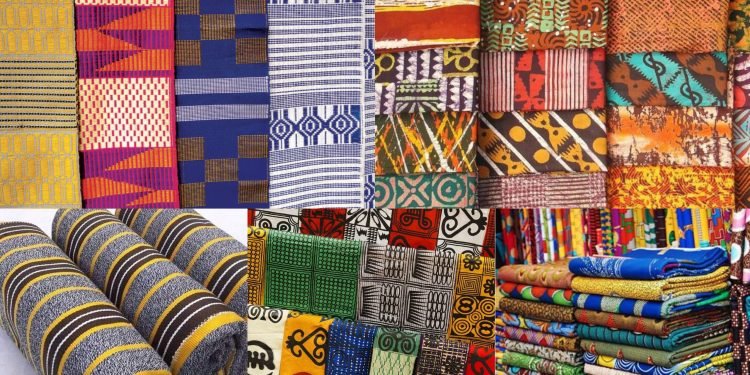Ghana’s textile industry, renowned for its rich history and cultural significance, is currently facing challenges due to a surge in counterfeit products flooding the market, particularly those originating from China.
The influx of these counterfeit imports has led to a decline in sales and a threat to the viability of local manufacturers.
For decades, Ghana’s textiles have been celebrated for their unique designs, vibrant colours, and cultural significance.
The industry has played a vital role in the country’s economy, contributing to exports and job creation. However, in recent years, local manufacturers have been struggling to compete with the low-priced counterfeit fabrics that are flooding the market.
Perpetual Agyemang, who has been in the textile business for almost 20 years, reflects on the drastic changes she has witnessed and expresses her disappointment with the current state of affairs.
She stated that sales and purchasing have dropped significantly, affecting the overall performance of the industry.
“For production, I would say the standard is still the same even a bit better than before but the sales and purchasing, if I’m rated from one to 100, formerly it would have been 80 per cent but now 20 per cent, very low. For me now, if there’s something I could exchange this with what I’m doing, I’ll close down.”
Stakeholders in the industry have reported producing fewer quantities due to the challenges, leading to job losses and financial strain. The proliferation of counterfeit textiles is one of the major factors posing a significant threat to Ghana’s textile industry.
Retailers within the industry are calling for urgent action to address the issue of counterfeits, emphasizing the need for stricter enforcement of intellectual property laws and regulations.
Emmanuel Kissi Debrah, the Sales Manager of Textiles Ghana Limited, highlighted the significant drop in sales within the last five years, mainly due to the rise of counterfeit imports.
“If I look at the last five years, in 2019 we sold about 18. 8 million yards and last year we did about 8.8 million yards so you can see the difference, shortfall of about 10 million yards already gone just within five years. And this year we are not expecting to do anything more than that and it’s mainly because of the copies and imports.
“So in Ghana, currently we have about three textile companies that have TSG, we produce GTP, wooden and import Lisco. We also have Printex, we have ATL. We more or less estimated at least around 100 million yards but because the market size is shrinking, we have about 85 million yards currently. Importation is about 70 per cent of it so all the three companies put together we’re doing just 30 per cent.”
Philip Ofori, Head of the Engraving and Innovation Department at Textiles Ghana Limited, pointed out the factors contributing to the high cost of production, including imported materials and the challenges local suppliers face.
The situation has led to a shrinking market size, with local companies struggling to compete with the influx of cheap, counterfeit products.
“Some are imported, some are also taken from Ghana, we used to take it from ATL, there used to be Juapong textiles but it was changed to Volta style but now they are having some challenges in the company so we import some from Benin and Volta star which is from Ghana.”


